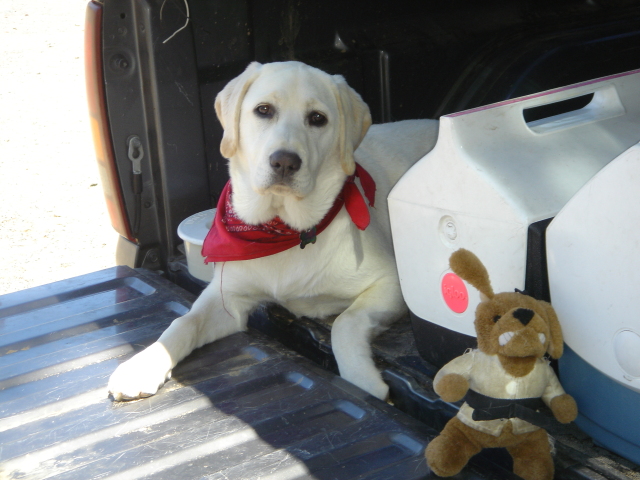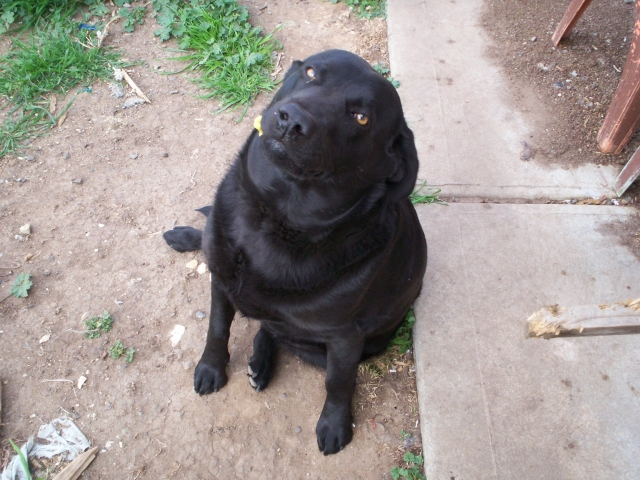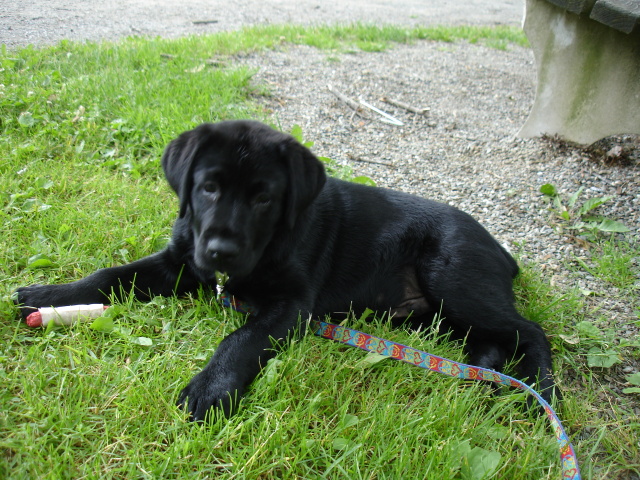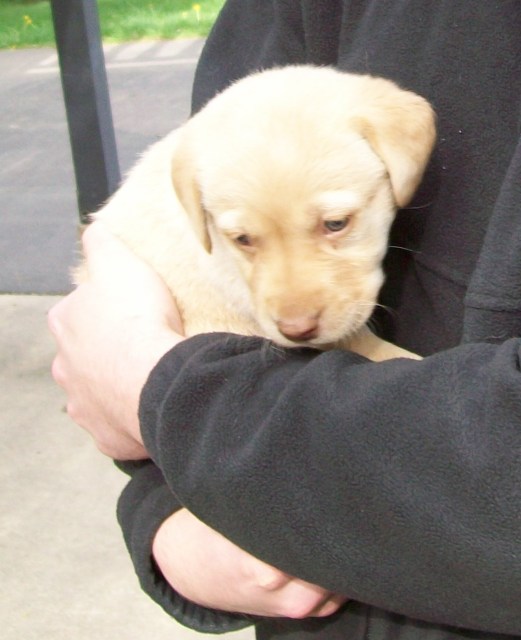QuestionUnfortunately I dispise dog crates - is that the only solution? And if so, what is the maximum time that she should be left in it? As well, what time frame would I expect to train her for a crate and how do I do it?
Thanks.
-------------------------------------------
The text above is a follow-up to ...
-----Question-----
14 month old female yellow lab/husky cross - stays in the porch den (5'x7') in the daytime (7hours max). No door just a see through gate. She has chew toys, bones, stuffed kongs, toys, balls, more than enough but - insists on chewing the baseboards in her den. Tried the bitter sprays, cayenne pepper, hot sauce, etc., - she loves them. What can I do with her to get her to stop? We've replaced the whole room once already and now she's started on the new stuff. When we are home she spends all of her time in the house with us and even sleeps in our room (sometimes) but doesn't chew one thing when around us. HELP!
-----Answer-----
The best solution is a crate. It is only natural that a puppy resists its crate at first. What the puppy
wants more than anything else is to be others, you, anyone else in the
household, and any other pets. In our modern society, even if we are home,
other things distract us from the attention an uncrated puppy must have. The
only real solution is to crate the dog when you aren't around. The dog may be
happier in its den than loose in the house. It relaxes, it feels safe in its
den. It rests, the body slows down reducing the need for water and relieving
its self. Dogs that have been crated all along do very well. Many of them
will rest in their crates even when the door is open. I think the plastic
ones give the dog more of a safe, enclosed den feeling. Metal ones can be put
in a corner or covered with something the dog can't pull in and chew. Select
a crate just big enough for the full grown dog to stretch out in.
Leave it some toys. Perhaps a Kong filled with peanut butter. Don't leave
anything in the crate the dog might chew up. It will do fine without even any
bedding. You will come home to a safe dog and a house you can enjoy.
A dog that has not been crated since it was little, may take some work.
Start out just putting its toys and treats in the crate. Praise it for going
in. Feed it in the crate. This is also an easy way to maintain order at
feeding time for more than one dog.
The "shut the puppy in a safe room" is a fallacy. Very few houses even have a
safe room. How many of us have a room with a hard surfaced floor and nothing
else? Most rooms have electrical cords to chew if nothing else. In addition
to destroying anything a bored puppy finds to chew, it may choke or have
intestinal blockage from the pieces. I had a friend that left her dog in a
"safe" room. It ate a hole in the floor covering. The safe rooms fail to
give the dog the comfort of the enclosed space their instinct requires. Nor
do they restrict activity extending the time the dog can go without relieving
itself.
AnswerThe crate is a highly useful tool. They seem horrible to many people. What some people don't realize is that dogs are wired differently than people. I hate it when I see a would be dog adviser saying dogs are just little people in fur coats. Not really. Yes, you should be kind and loving to your dog, but treat it like a dog. Many people have extracted themselves from a joint they shouldn't have gone in, by standing straight, giving a big toothy grin and looking somebody in the eye. Try that with an unfriendly dog, and you may get bit.
So the thought of being shut up in a little cage makes some people's skin crawl. To a young dog, it is natural and comforting to be left behind in a small den. The school I am raising my 12 week old Lab Holly for gives the puppy raisers a 36'' Pet Porter. When the dog goes back for formal training after a year old, the crate goes back too. After the dog is trained and given to a client, the crate goes to the client's home to be its den. It is a very important part of the dog's security helping it to adapt to its new life.
Maybe there is another solution, but I don't know it. I have seen people that say they have trained their dog and don't need a crate. Unfortunately, they seem to do more bragging than giving instructions others can make work.

 Diet
Question
Lucy and her toy
My yellow lab is about 1 year
Diet
Question
Lucy and her toy
My yellow lab is about 1 year
 lab healthy weight
Question
Cassie
I have a black lab and she is now 3 1/2
lab healthy weight
Question
Cassie
I have a black lab and she is now 3 1/2
 Is my lab puppy growing to fast?
Questionjust hanging out!
QUESTION: I recently t
Is my lab puppy growing to fast?
Questionjust hanging out!
QUESTION: I recently t
 Lab Puppy Eye Color
Question
Yellow Puppy
We are looking at buying a 5 1/2
Lab Puppy Eye Color
Question
Yellow Puppy
We are looking at buying a 5 1/2
 Hyper active Labrador Pupp.
Question
Benji
Hello Jen,
&nbs
Hyper active Labrador Pupp.
Question
Benji
Hello Jen,
&nbs